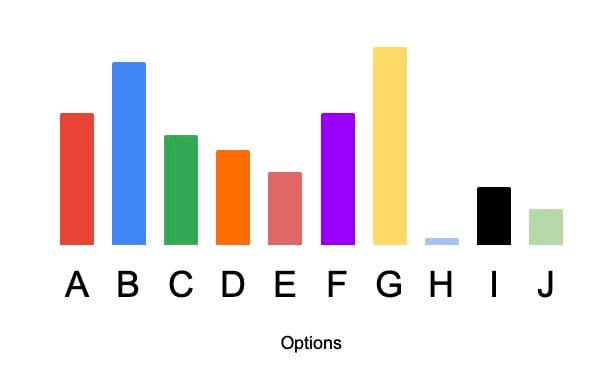Rewind to May 2021 and Eurovision fans delighted in the return of the annual song contest after a Covid absence. A fun night was had by many, except the UK.
Despite many music critics liking the song (some even suggesting it could be an outsider to win), James Newman’s Embers seemingly burned up and scored an infamous nul points.
Was the song really as bad as the score suggests?
Options & Opportunity
I am a research but not a musicologist. I can’t comment on the the worthiness of the song. And music is subjective. So this isn't about the artistic merits of songs at Eurovision. Instead we are thinking about how a contestant can score no points.
In the 2021 final there were 26 performers and 39 voting countries. Each country can allocate points to only 10 countries, i.e. their favourite 10 songs. For argument’s sake let us say the UK was the 11th favourite song of every countries’ jury: far from bad but unfortunately no points won.
On the other hand a country could be in the top 10 of one or 2 countries (dare we raise the possibility of political voting?) yet are never above 11th place for any other country: they register points on the board and look better. In 2021 Germany were the 8th favourite of Austria’s jury and the 10th of Romania’s and, though they may have been consistently every other country’s 12th favourite or lower, still received more points overall than the UK.
The upshot is that being consistently 11th is looks worse than being 10th once or twice only.
Constraining Choice
The results reflect a constrained choice, one the Eurovision organisers use to ensure the results process is quick and the results table easy to digest. (If you think of leagues in various sports where the winner is worked out on goal differences or head-to-head results there is an obvious advantage to simplicity for Eurovision)
Constrained choice is a technique regularly in surveys in surveys.
For example, a town council is conducting a housing needs survey and want to know what they can do to address unmet housing needs. The council has a list of 10 possible options (similar to the 26 songs in Eurovision) but ask respondents to say which 3 they prefer (the constrained choice). The response might look something like this.

Diverse consensus, refined decisions
This technique can be helpful in various situations where surveys are used to help find that concensus for decision making. They are an effective tool to utilise in gathering these important insights. By asking for more than one but less than n they provide a more reflective breadth of opinion, highlighting diverse consensus and illustrating possible decisions.
But just because an option - a song or a housing option- doesn’t make it to the final cut doesn’t mean it’s bad or unpopular it just means it hasn’t quite made the final cut. And that helps identify and illustrate priorities and winners.
Was the UK's entry that bad? I can't tell you musically but offer some hope that it wasn't as bad as it first seems. But the next time you watch Eurovision and wonder why someone has done seemingly so badly, take some heart that they may not be the best but chances are they weren’t as bad as they first looked.
You may also be interested in
Thought, inspiration and how-to straight in your inbox - Sign up today
By subscribing you will receive our newsletter up to 4 times a year and occasional news of forthcoming events. You can unsubscribe at anytime.





